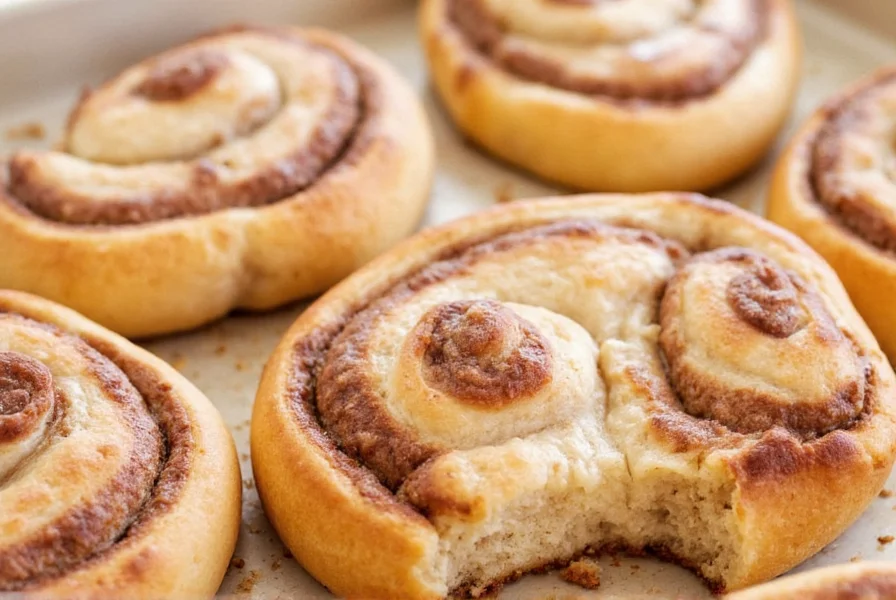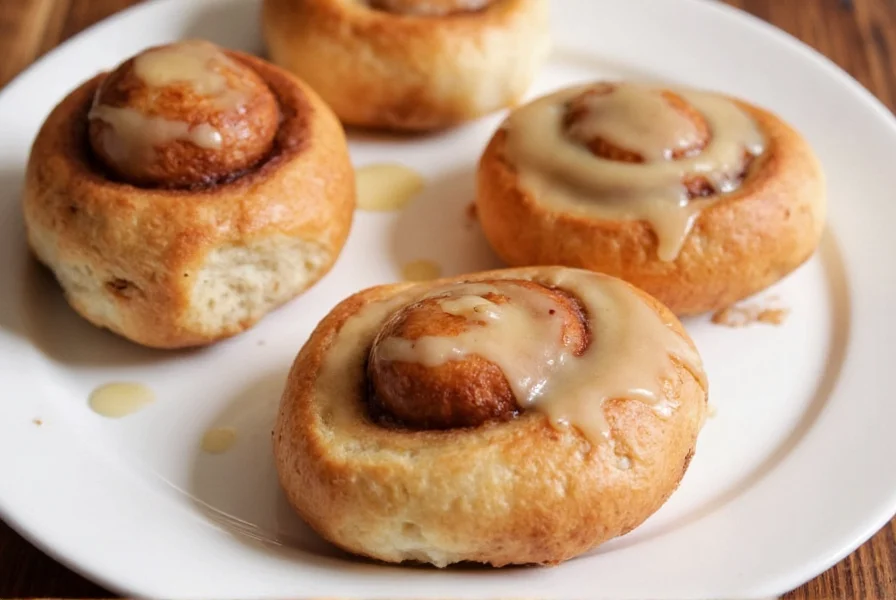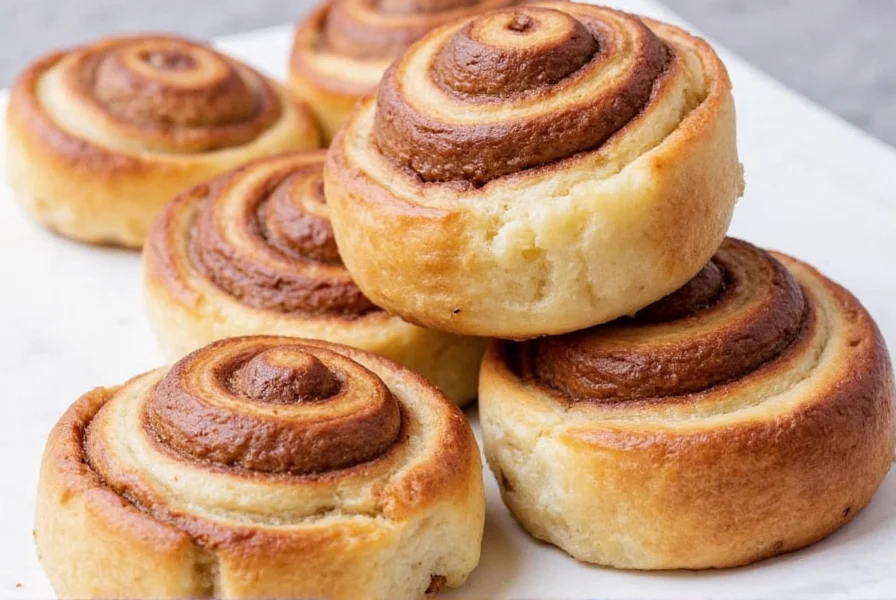For baking enthusiasts seeking authentic results, understanding the nuances of cinnamon bun preparation makes all the difference. Unlike American-style cinnamon rolls which often feature cream cheese frosting, traditional Scandinavian cinnamon buns use a pearl sugar topping or simple icing. The dough’s richness comes from butter, milk, and eggs, while the filling balances cinnamon, sugar, and sometimes cardamom for complexity.
The Scandinavian Origins of Cinnamon Buns
Cinnamon buns trace their roots to 17th century Sweden, where spices like cinnamon became accessible through expanding trade routes. Known as “kanelbullar,” these pastries became integral to Swedish “fika” culture – the daily coffee break tradition. The classic Swedish version features a cardamom-infused dough with a cinnamon-sugar-pearl sugar filling, baked until golden with a distinctive spiral pattern.
While American cinnamon rolls evolved with cream cheese frosting and often a gooier texture, Scandinavian cinnamon buns maintain a drier consistency that pairs perfectly with coffee. This cultural distinction explains why homemade cinnamon buns recipe searches often yield different results depending on regional preferences.
Essential Ingredients for Perfect Cinnamon Buns
The magic of exceptional cinnamon buns lies in ingredient quality and proper technique. Here’s what makes each component crucial:
| Ingredient | Function | Professional Tip |
|---|---|---|
| High-quality cinnamon | Provides warm, complex flavor | Ceylon cinnamon offers delicate notes; Cassia provides stronger punch |
| Fresh yeast | Creates light, airy texture | Substitute 25% sourdough starter for depth of flavor |
| Cultured butter | Enriches dough, enhances browning | European-style butter (82%+ fat) yields superior results |
| Bread flour | Provides necessary gluten structure | Substitute 10% whole wheat for nutty complexity |
Many home bakers wonder about the cinnamon bun vs cinnamon roll distinction. While both share similar components, traditional Swedish cinnamon buns use less sugar in the dough, incorporate cardamom, and feature a drier texture designed to dunk in coffee. American versions typically have sweeter dough and cream cheese frosting.
Step-by-Step Preparation Guide
Creating bakery-quality cinnamon buns requires attention to detail at each stage. Follow this professional approach for consistent results:
- Dough preparation: Combine warm milk (110°F), yeast, and a pinch of sugar. After 5-10 minutes of activation, mix with flour, eggs, and softened butter. Knead until smooth and elastic (about 10 minutes).
- First rise: Let dough rise at room temperature until doubled (1.5-2 hours). For enhanced flavor, refrigerate overnight – this overnight cinnamon buns method develops complex flavors.
- Filling creation: Mix softened butter with cinnamon, sugar, and optional cardamom. Spread evenly over rolled dough, leaving 1-inch border.
- Rolling technique: Roll tightly from long edge, pinch seam, and cut with dental floss for clean slices. Place in greased pan with space between rolls.
- Baking: Bake at 375°F until golden (18-22 minutes). Cool slightly before applying glaze.
Avoiding Common Cinnamon Bun Mistakes
Even experienced bakers encounter issues with cinnamon buns. Here’s how to troubleshoot frequent problems:
- Flat, dense buns: Often caused by expired yeast or over-flouring. Measure flour by weight (450g per batch) rather than volume.
- Filling leakage: Results from butter that’s too soft. Chill rolled dough for 15 minutes before slicing.
- Tough texture: Over-kneading develops excessive gluten. Stop when dough passes the “windowpane test.”
- Soggy bottoms: Place baking rack in upper third of oven and use light-colored pans for even browning.
Creative Variations for Every Occasion
While traditional Swedish cinnamon buns remain beloved, creative adaptations suit various dietary needs and preferences:

- Vegan adaptation: Substitute plant-based milk, vegan butter, and flax eggs. For authentic vegan cinnamon buns recipe, add 1 tsp apple cider vinegar to activate baking properties.
- Gluten-free version: Use 400g gluten-free flour blend with 2 tsp xanthan gum. Increase butter by 25% to compensate for dryness.
- Breakfast twist: Add chopped walnuts or pecans to filling, or swirl in apple compote for autumnal flavor.
- Decadent upgrade: Incorporate caramel sauce between layers or add orange zest to dough for brightness.
Proper Storage and Reheating Techniques
To maintain freshness, proper storage is essential for how to store cinnamon buns effectively:
- Room temperature: Keep in airtight container for up to 2 days. Place parchment between layers to prevent sticking.
- Refrigeration: Store up to 5 days. Reheat individual buns in microwave for 15 seconds with damp paper towel.
- Freezing: Wrap cooled buns individually in plastic wrap, then foil. Freeze up to 3 months. Thaw at room temperature for 2 hours before reheating.
- Reviving stale buns: Spritz with water and warm in 300°F oven for 5 minutes to restore softness.

Serving Traditions Around the World
Cinnamon buns transcend Scandinavian borders with regional interpretations:
- Sweden: Served with coffee during “fika” (daily coffee break), traditionally with pearl sugar topping
- Finland: “Korvapuusti” features a distinctive knot shape and cardamom in both dough and filling
- United States: Larger, sweeter versions with cream cheese frosting, often called “cinnamon rolls”
- Mexico: “Conchas” feature similar sweet bread with spiral topping, though not specifically cinnamon-focused
Understanding these cultural variations helps bakers appreciate the global journey of this simple yet sophisticated pastry. Whether following a traditional homemade cinnamon buns recipe or experimenting with modern twists, the key lies in balancing spice, sweetness, and texture for that perfect bite.











 浙公网安备
33010002000092号
浙公网安备
33010002000092号 浙B2-20120091-4
浙B2-20120091-4